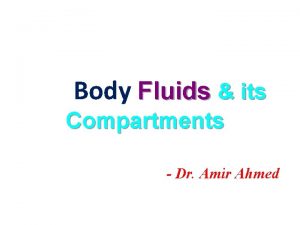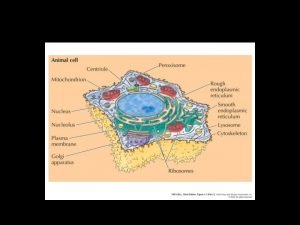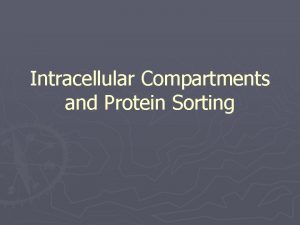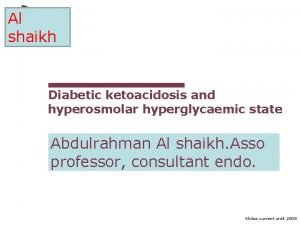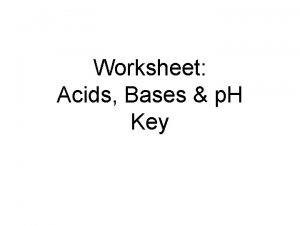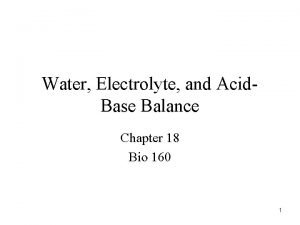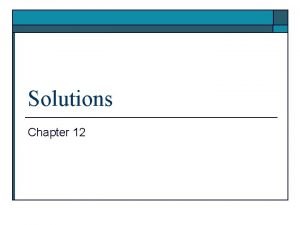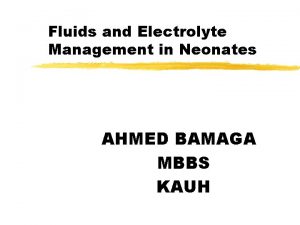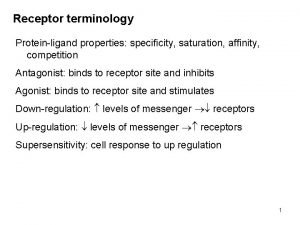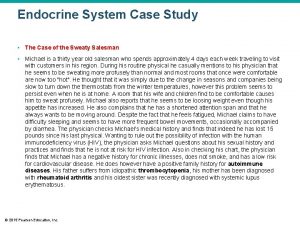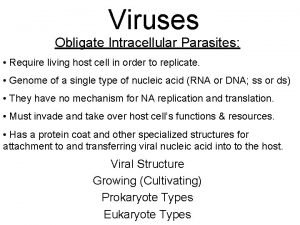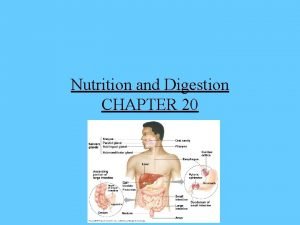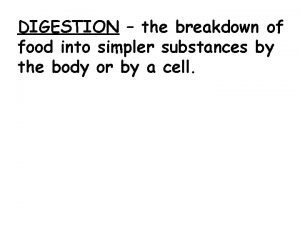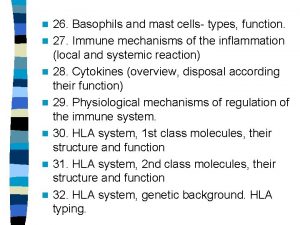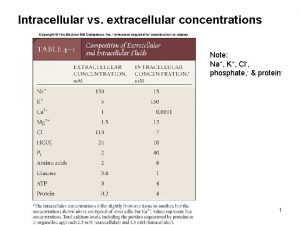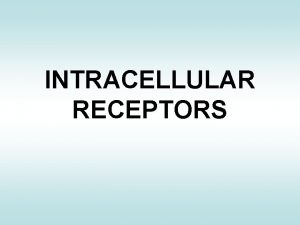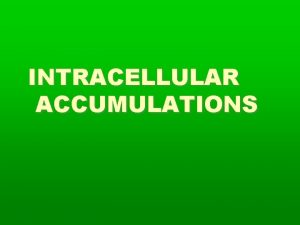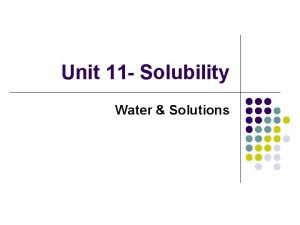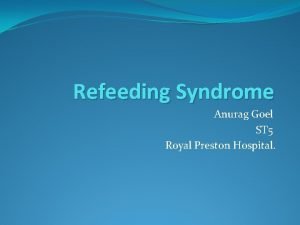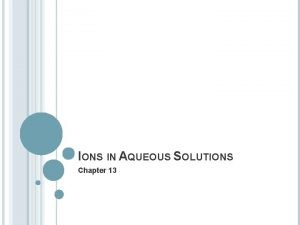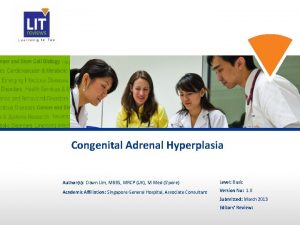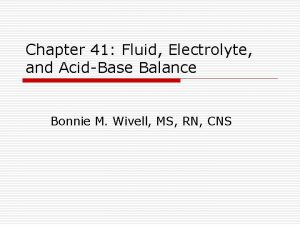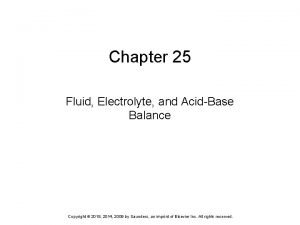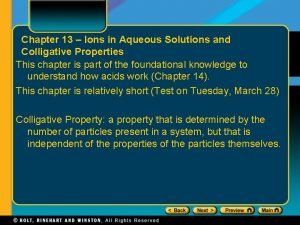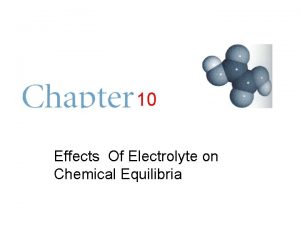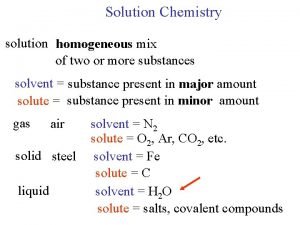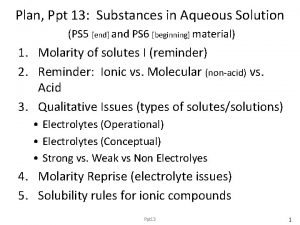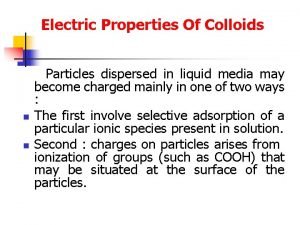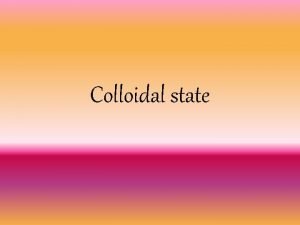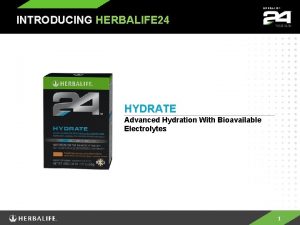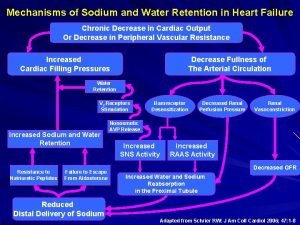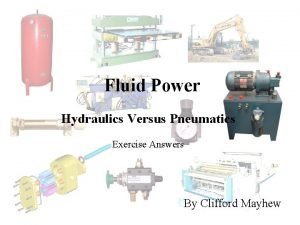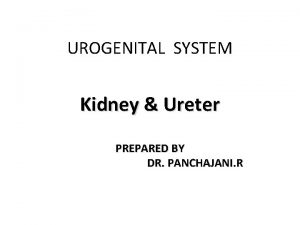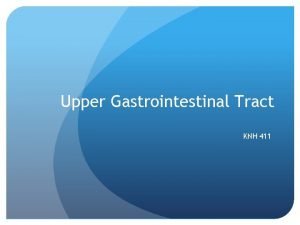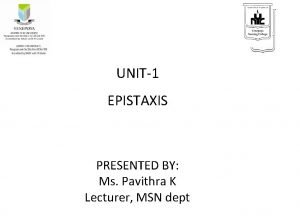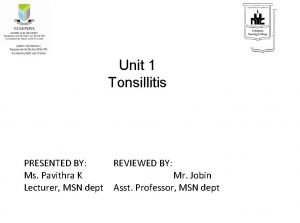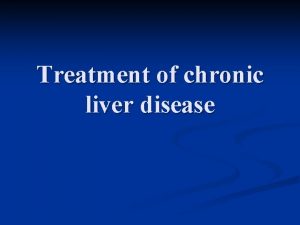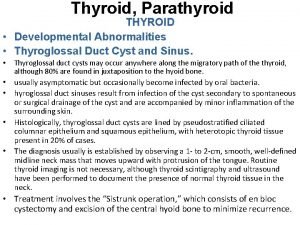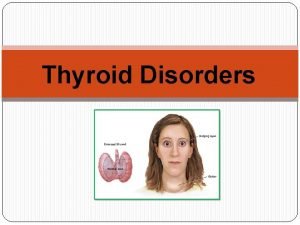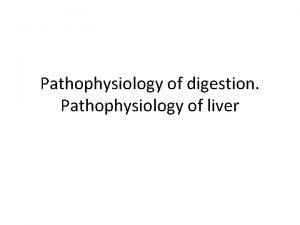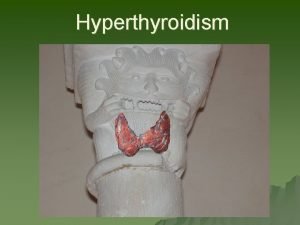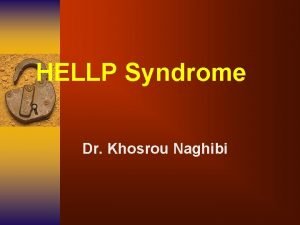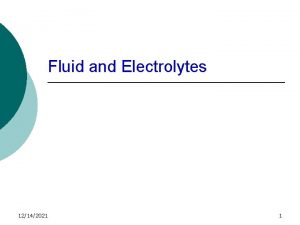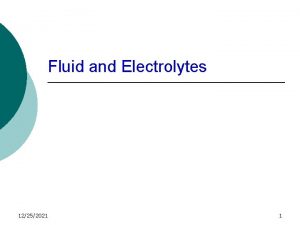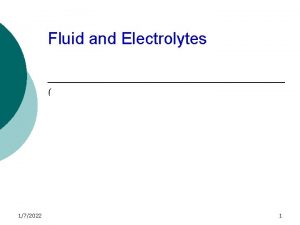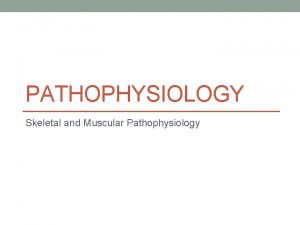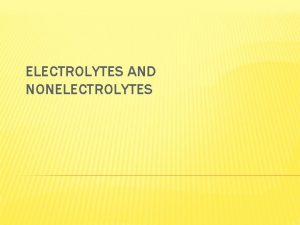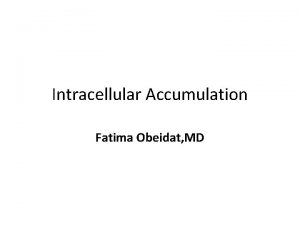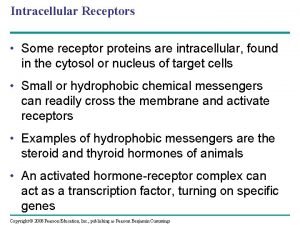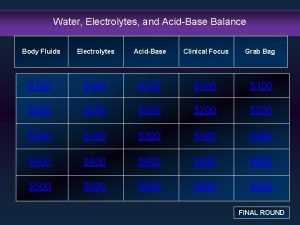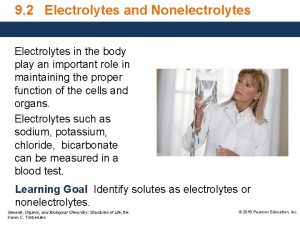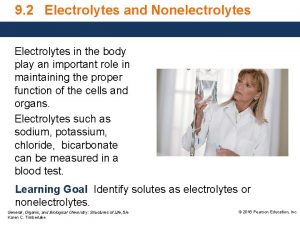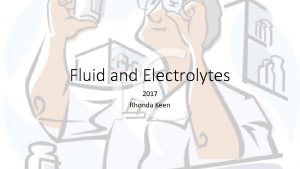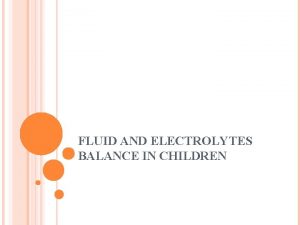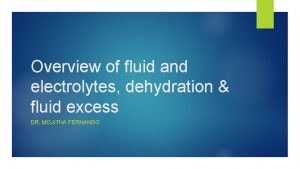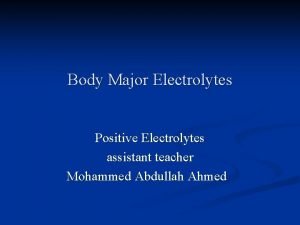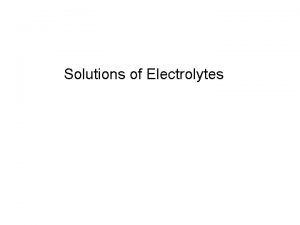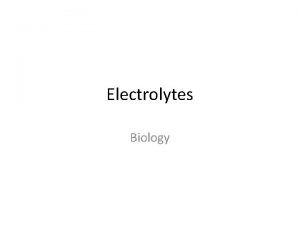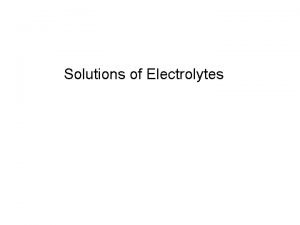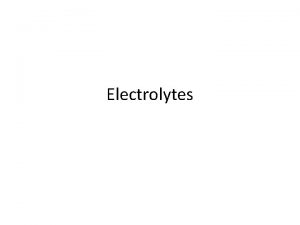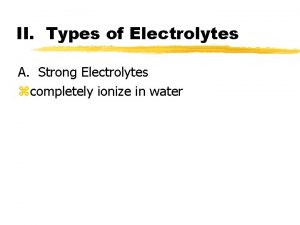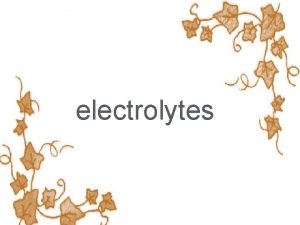Pathophysiology Fluid and electrolytes Terms Intracellular fluid fluid











![Starling law of the capillaries � Example EF=[18 mm+3 mm]-[25 mm+0 mm]= -3 mm. Starling law of the capillaries � Example EF=[18 mm+3 mm]-[25 mm+0 mm]= -3 mm.](https://slidetodoc.com/presentation_image_h2/0706a684d7542acb1177a784949edf3e/image-12.jpg)


















































- Slides: 62

Pathophysiology � Fluid and electrolytes � Terms ◦ Intracellular fluid- fluid in the cells ◦ Extracellular fluid- fluid outside the cells �Interstitial fluid- fluid between the cells �Plasma- fluid in the blood

Terms �Oncotic pressure �-the pressure exerted by plasma proteins on the capillary wall �Osmotic pressure �: the pressure produced by or associated with osmosis and dependent on solute concentration and temperature � Oncotic pressure in the circulatory system is a form of osmotic pressure exerted by proteins in blood plasma that normally tends to pull water into the circulatory system. Colloid osmotic pressure is another name for oncotic pressure. �Colloid osmotic pressure is used in calculations related to Starling’s law of the capillaries

Fluid intake and output � Fluid intake is from water in foods, liquids ingested and water of catabolism ◦ The total is around 2, 400 to 2, 800 ml a day � Fluid output is loss from the skin by diffusion and sweat, by the kidneys (urine) about 1500 ml/day, and by the intestines (feces) ◦ Output is about 2, 400 -2, 800 ml per day ◦ Note 2, 800 ml =2. 8 Liters

Memory check m. Eq/L � m. Eq/L= mg of ion per liter x number of charges of one ion (valence)/ atomic weight of ion(s) � Note: If mg of ion is per 100 ml X by 10 to bring to liter � Example Patient blood work shows the following: � laboratory results indicate that the plasma sodium = 110 m. Eq/L, look at normal levels � Too low

Memory check 2 � An acid is a substance/chemical that donates a hydrogen ion to the solution ◦ Examples of acids are HCL (hydrochloric acid and H 2 CO 3 (carbonic acid � Acid/ base balance in body fluids is affected by the formation of carbonic acid � CO 2 + H 2 O H 2 CO 3 H+ + HCO 3

p. H Negative log of hydrogen ion concentration � Order of 10 between each p. H (p. H=1 and p. H=2) � Normal p. H for body fluids is between p. H 7. 35 and 7. 4 � If body fluids have a p. H= 7. 1 that is too acidic ( acidosis) � If body fluids have a p. H=7. 7 that is too alkaline ( alkalosis) � Note: the p. H scale is logarithmic � � � The p. H of saliva is about 7 and the p. H of gastric juice is about 2. How many more concentrated is hydrogen ion in gastric juice than in saliva Solution: five steps between p. H 7 and p. H 2, each step is an order of 10 (10 x 10 x 10)= 100, 000 ; or 105=100, 000

Normal Plasma values to know � p. H= 7. 35 -7. 45 � K+ = 3. 5 -5 m. Eq/L � Na+ = 135 -145 m. Eq/L � Cl- = 104 m. Eq/L � HCO 3 - =24 m. Eq/L � CO 2 = 28 m. Eq/L (24 -30) � Partial pressures of gases in blood ◦ p. CO 2= 35 -45 mm. Hg

Hormones affect fluid balance � Antidiuretic hormone ADH is released from the posterior pituitary gland causes the body to retain fluid in times of inadequate fluid intake ◦ Factors which stimulate release include stress, hypernatremia, increase in plasma osmolatity and a decrease in plasma volume ◦ Urine volume decreases and plasma volume increases when ADH levels increase

High Aldosterone � Aldosterone is secreted by the adrenal cortex � Causes retention (reabsorption) of sodium ions and the excretion of potassium ions which results in the retention of body fluids ◦ Urine volume decreases and plasma volume increases ◦ Blood sodium increases and potassium levels in the blood decrease

Alterations in water movement � Edema ◦ Forces pushing out are greater than normal, fluid excess is not returned to venous and or lymphatic vessels

Starling law of the capillaries � Effective filtration pressure = EF( net filtration) (same as Q = fluid movement) � EF(Q)= [CHP+IFOP]-[IFHP +COP] � Example EF= [37 mm+2 mm]-[27 mm+2 mm]= 10 mm. Hg � Normal for arterial side of capillary bed to have a positive value � Fluid and nutrients move out of the arterial side of the capillaries
![Starling law of the capillaries Example EF18 mm3 mm25 mm0 mm 3 mm Starling law of the capillaries � Example EF=[18 mm+3 mm]-[25 mm+0 mm]= -3 mm.](https://slidetodoc.com/presentation_image_h2/0706a684d7542acb1177a784949edf3e/image-12.jpg)
Starling law of the capillaries � Example EF=[18 mm+3 mm]-[25 mm+0 mm]= -3 mm. Hg � Normal for venous side of capillary bed to have a negative value � Fluid and wastes move into the venous side of the capillaries

Causes of edema- increased HP � Hydrostatic pressure increases because of venous obstruction � Thrombophlebitis � Hepatic obstruction � Tight clothing around extremities � Prolonged standing (without movement)

Causes of edema- increased blood volume � Salt and water retention leading to increased blood volume � Congestive heart failure � Renal failure

Causes of edema- decreased plasma albumin � Decreased production because of liver disease � Increase loss of albumin due ◦ Inflammation response (increase permeability of capillaries) ◦ Glomerulonephritis ◦ Burns ◦ Open wounds ◦ Hemorrhage

Causes of edema � Lymphatic obstruction ◦ Tumors ◦ Surgical removal of lymph nodes � Localized edema ◦ Site of trauma ◦ Example sprained ankle, splinter � Edema localized to an organ ◦ Pulmonary edema, cerebral edema, ascites ◦ Ascites is edema of the peritoneal space

Generalized edema � Uniform distribution of excess fluid � Dependent (gravity) edema ◦ Fluid builds up in legs and feet when standing ◦ Sacral and buttock areas when lying down ◦ Pitting edema

Complications � Because of trapping of fluid causes sequestering of fluid � Dehydration occurs � Timely fluid and electrolyte replacement is critical and treating the cause of edema is essential to prevent complications

Alterations in Sodium, Chloride, and water balance � Hormones that help regulate fluid balance include- antidiuretic hormone (ADH), aldosterone, (atrial) natriuretic hormone (ANH) � Types- isotonic alterations, hypertonic alterations, hypotonic alterations

Isotonic alterations (fluid volume deficits) � Occurs when fluid loss (or gain) and electrolyte loss (or gain) are proportional

Isotonic fluid loss (isotonic dehydration) � Causes- hemorrhage, severe wound drainage, excessive diaphoresis � Signs and symptoms include- loss of weight, dry skin, dry mucous membranes, decreased urine output � Hypovolemia symptoms include rapid heart rate, decreased blood pressure, shock may occur. Sometimes because of flattened veins it is difficult to start IV

Isotonic fluid excesses � Causes- excessive IV, hypersecretion of aldosterone, side effects of cortisone � Signs and symptoms include- hypervolemia, weight gain, decreased hematocrit, increase blood pressure, increased BHP � Complications- pulmonary edema, heart failure

Hypertonic alterations � Osmolality of ECF increases � Most common cause hypernatremia or deficit of ECF fluid

hypernatremia � Serum sodium levels greater than 147 m. Eq/L � Loss of water, gain of sodium � When water loss occurs in hypernatremia ICF and ECF dehydration occurs � Causes hyperosmolaity

Hypernatremia � Causes does not include excess dietary sodium � Causes include inappropriate administration of hypertonic saline � (Sodium bicarbonate is often given to treat acidosis during cardiac arrest) � Over secretion of aldosterone as in Cushing syndrome

Increase retention of sodium � Can also be a result of complications associated with � Respiratory infections � Diabetes mellitus � Diabetes insipidus � Polyuria � Profuse sweating � Diarrhea in children

Signs and symptoms of hypernatremia � Signs and symptoms- thirst, fever, dry mucous membranes, restlessness � Complications- convulsions, pulmonary edema

Water deficit � Dehydration � Causes- lack of intake, excess of loss of water vapor as in hyperventilation, increased renal clearance, diabetes insipidus

Signs and symptoms of water deficit � Thirst, dry skin, dry mucous membranes, concentrated urine, tachycardia, weak pulses, postural hypotension

Hyperchloremia � Too much chloride � Occurs with hypernatremia or with too little bicarbonate � Can occur with metabolic acidosis � Ingestion of ammonium chloride diuretic is a infrequent cause (excess loss of chloride occurs)

Hyponatremia � Serum levels below 135 m. Eq/L � Pure sodium deficits- extrarenal lossesvomiting, diarrhea, burns, GI suction � Inadequate intake is rare but possible in person on very low sodium diets accompanied by use of diuretics

Hyponatremia, cont. � IV of 5% dextrose can cause dilution hyponatremia � Excess sweating and intake of sodium free water � Renal dysfunction can lead to hypoosmolar hyponatremia

Hypertonic hyponatremia � Complications of hyperlipidemia, hyperproteinemia and or hyperglycemia � Increases in plasma lipids, proteins, displace water volume and decrease sodium concentrations

Signs and symptoms of hyponatremia � Behavioral and neurologic function includelethargy, confusion, apprehension, seizures, coma � if loss of ECF also occurs symptoms of hypotension also occur

Water excess � Causes- compulsive water drinking � IV of 5% dextrose in patients with acute renal failure, congestive heart failure, cirrhosis of liver can cause water excess � Decreased urine formation ◦ Associated with renal disease or decreased renal blood flow

SIADH � Syndrome of inappropriate secretion of ADH � Causes of SIADH include fear, pain, acute infections, brain trauma, surgery, side effects of some medications (analgesics and anesthetics) and bronchogenic cancer � Decrease renal excretion of water occurs

Signs and symptoms of water excess � Acute excesses- confusion and convulsions � Long term excesses- weakness, nausea, muscle twitching, headache, weight gain

Hypochloremia � Loss of chloride � Result of hyponatremia � Elevated bicarbonate as in metabolic alkalosis � Vomiting with loss of HCl � Salt restricted diets and or use of diuretics � Cystic fibrosis is characterized by hypochloremia

Potassium and health � Potassium intake associated with reduction in BP � Stroke risk is increased with increase loss of potassium � Foods high in potassium are cranberries and bananas

Hypokalemia � Serum plasma levels below 3. 5 m. Eq/L � Loss of potassium- diarrhea, laxative abuse, vomiting, eating disorders, some diuretics, kidney disorders

Signs and symptoms of hypokalemia � Dysrhythmia, EKG depressed T wave, irregular pulse, lethargy, fatigue, confusion, nausea, water loss, thirst, muscle weakness

Hyperkalemia � Above 5. 5 m. Eq/L � Causes- shift from intracellular to extracellular space as in massive trauma or burns, decreased renal excretion, excess intake (rare as use of KCl by mistake) and in metabolic acidosis

Example �A patient suffers from weakness, dizziness, irritability, and intestinal cramps: The EKG shows tall peaked T wave but otherwise normal. � The lab results show Plasma sodium=138 m. Eq/L � Blood potassium levels =6. 8 m. Eq/L � � � This individual is suffering from a. hypernatremia b. hyponatremia c. hypercalcemia d. hyperkalemia e. hypokalemia

Signs and symptoms of hyperkalemia � Dysrhythmia, bradycardia, anxiety, tingling, numbness, nausea, vomiting, earlyhyperactive muscles, late- weakness of muscle

Acid Base balance � Buffers include bicarbonate, phosphate (renal), hemoglobin (protein)

Carbonic acid-bicarbonate buffering � Normal blood p. H=7. 4 which is a 20: 1 ratio of BB/CA � For example if the bicarbonate (BB)level is 24 m. Eq/L and the carbonic acid(CA) level is 1. 2 m. Eq/L the ratio is 20: 1

Compensation mechanisms to control p. H � Acidification of urine- slowest (kidneys) � Respiration rate – medium (lungs) � Buffer systems of blood- fastest (blood buffers)

The four types of Acid-Base imbalances � Metabolic acidosis � Metabolic alkalosis � Respiratory acidosis � Respiratory alkalosis

Metabolic acidosis � Increased H+ load ◦ Ketoacidosis-diabetes mellitus, starvation ◦ Lactic acidosis- shock ◦ Ingestion- ammonium chloride, ethylene glycol, methanol

Decreased H+ excretion � Uremia � Distal renal tubule acidosis

Bicarbonate loss � Renal failure � Diarrhea � Proximal renal tubule acidosis

Signs and symptoms of metabolic acidosis � Headache, lethargy, rapid and deep respirations, anorexia, nausea, vomiting, diarrhea, abdominal discomfort

Metabolic acidosis � Ratio BB/CA is 10: 1 p. H=7. 1 � Body compensation- respiratory- increased breathing rate blows off excess CO 2 ; kidney conserves HCO 3 - and excretes H+, urine is acidic � Therapy- use of lactate IV- increases HCO 3 in liver

Metabolic alkalosis � Cause- excess ingestion of bicarbonate � Excess bicarbonate due to loss of chloride ions

Signs and symptoms of metabolic alkalosis � Weakness, muscle cramps, hyperactive reflexes, tetany, shallow slow respirations, confusion, convulsion, atrial tachycardia

Metabolic alkalosis � BB/CC ratio is 40: 1 p. H=7. 7 � Body compensation- breathing is suppressed � Alkaline urine is produced � Therapy- IV containing chloride

Respiratory acidosis � Causes pneumonia, emphysema, asthma, bronchitis, pulmonary edema, depression of respiratory center, dyphoscoliosis

Signs and symptoms of respiratory acidosis � Apprehension, lethargy, muscle twitching, tremors, convulsions,

Respiratory acidosis � Ratio BB/CA is 10: 1 p. H=7. 1 � Body compensation- acidic urine � Therapy- lactate IV

Respiratory alkalosis � Alveolar hyperventilation � Hypoxemia caused by pulmonary disease, congestive heard failure, high altitudes, hypermetabolic states, hysteria, cirrhosis of gram negative sepsis which cause hyperventilation

Signs and symptoms of respiratory alkalosis � Confusion, dizziness, tingling of extremities, convulsions, coma

Respiratory alkalosis � BB/CA ratio of 40: 1 p. H=7. 7 � Body compensation- alkaline urine � Therapy- IV of chloride solution
 Intracellular fluid and extracellular fluid examples
Intracellular fluid and extracellular fluid examples Ecf icf and interstitial fluid
Ecf icf and interstitial fluid Solute definition
Solute definition Intracellular and extracellular
Intracellular and extracellular Intracellular compartments and protein sorting
Intracellular compartments and protein sorting Dka and electrolytes
Dka and electrolytes Vacid definition
Vacid definition Chapter 18 fluids and electrolytes
Chapter 18 fluids and electrolytes Vapor pressure lowering
Vapor pressure lowering Major intra and extracellular electrolytes
Major intra and extracellular electrolytes Electrolytes and nonelectrolytes
Electrolytes and nonelectrolytes Derine
Derine Intracellular accumulation meaning
Intracellular accumulation meaning Interstitial fluid vs extracellular fluid
Interstitial fluid vs extracellular fluid Lipofuscin
Lipofuscin Classification of hormones
Classification of hormones Obligate intracellular parasite
Obligate intracellular parasite Intracellular digestion
Intracellular digestion Transporte epitelial
Transporte epitelial Process of changing food into simpler substances
Process of changing food into simpler substances Intracellular structure
Intracellular structure Neurotrasmiters
Neurotrasmiters Dry gangrene vs wet gangrene
Dry gangrene vs wet gangrene Intracellular vs extracellular ion concentrations
Intracellular vs extracellular ion concentrations Intracellular receptors
Intracellular receptors Intracellular accumulations
Intracellular accumulations Weak electrolyte examples
Weak electrolyte examples Whats refeeding syndrome
Whats refeeding syndrome Medicare enteral qualification checklist
Medicare enteral qualification checklist Strong vs weak electrolytes
Strong vs weak electrolytes Non classical adrenal hyperplasia
Non classical adrenal hyperplasia Electrolytes normal range
Electrolytes normal range Chapter 25 fluid electrolyte and acid-base balance
Chapter 25 fluid electrolyte and acid-base balance Strong vs weak electrolytes
Strong vs weak electrolytes Weak electrolytes
Weak electrolytes How does electrolytes affects the chemical equilibria
How does electrolytes affects the chemical equilibria Weak electrolytes
Weak electrolytes Tropolar
Tropolar Protective colloids
Protective colloids What is colloidal state
What is colloidal state Herbalife 24 hydrate
Herbalife 24 hydrate Polynomial degrees and terms
Polynomial degrees and terms Identifying like terms
Identifying like terms Pathophysiology of sodium and water retention
Pathophysiology of sodium and water retention Paroxysmal nocturnal dyspnea pathophysiology
Paroxysmal nocturnal dyspnea pathophysiology Pump exercise
Pump exercise Movement of body fluids
Movement of body fluids Pathophysiology of kidney stones
Pathophysiology of kidney stones Dumping syndrome pathophysiology
Dumping syndrome pathophysiology Pathophysiology of epistaxis
Pathophysiology of epistaxis Tonsillitis pathophysiology
Tonsillitis pathophysiology Hepatic encephalopathy pathophysiology
Hepatic encephalopathy pathophysiology Thyroglossal cyst pathophysiology
Thyroglossal cyst pathophysiology Function of thyroxine
Function of thyroxine Neonatal sepsis pathophysiology diagram
Neonatal sepsis pathophysiology diagram Digestion
Digestion Cholecystitis pathophysiology
Cholecystitis pathophysiology Thyroid storm nursing interventions
Thyroid storm nursing interventions Taxis procedure hernia
Taxis procedure hernia Toxic multinodular goiter
Toxic multinodular goiter Primary vs secondary thyrotoxicosis
Primary vs secondary thyrotoxicosis Pathophysiology of hirschsprung disease
Pathophysiology of hirschsprung disease Hellp syndrome meaning
Hellp syndrome meaning

